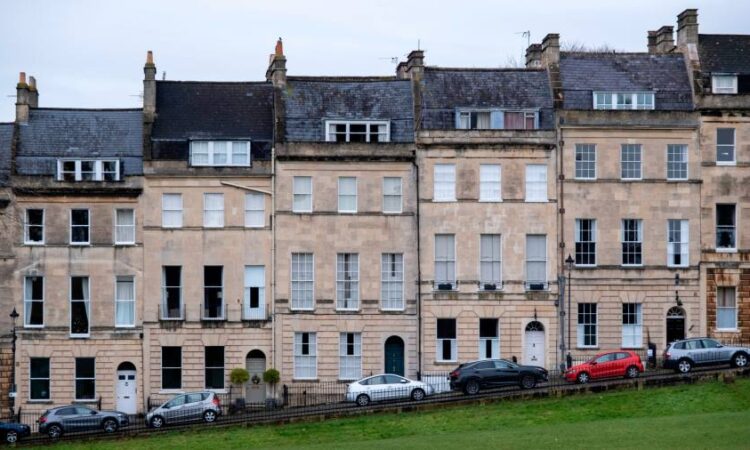
UK house prices rose unexpectedly in March, according to the lender Halifax, bucking the falling trend elsewhere in the property market, with resilience spurred by an easing of mortgage rates and the tight labour market.
House prices increased by 0.8 per cent between February and March, data showed on Thursday, beating economists’ expectations of a 0.3 per cent contraction.
Property prices were 1.6 per cent higher than in March last year, down from a 2.1 per cent expansion registered in February and the weakest rate since October 2019.
Kim Kinnaird, director at Halifax Mortgages, said the rise reflected an easing of mortgage rates and that the sharp increase in borrowing costs in November last year had “largely reversed”.
She added that the labour market, “a key indicator for house prices”, remained strong, with unemployment close to an all-time low.
Halifax’s figures on house prices contrast with data from Nationwide, another mortgage provider, which registered a 3.1 per cent annual rate fall in March, the steepest drop since 2009.
Myron Jobson, senior personal finance analyst at the investment platform Interactive Investor, said the conflicting assessments were “symptomatic of a hiccupping market that is adjusting to a comedown from the blistering pace of house price growth over the past few years”.
Nationwide and Halifax compile their house price indices based on the mortgages they approve for customers who may not be representative of the wider population.
Low volumes of mortgage approvals add to the volatility of the data. In February, mortgage approvals were 37 per cent down year on year, according to separate data from the Bank of England.
Andrew Wishart, senior property economist at research group Capital Economics, suggested Nationwide’s data was “closer to the truth” because it was more in line with other measures of the market such as the monthly poll of estate agents.
The S&P Global/Cips construction purchasing managers’ index, a measure of activity in the sector, showed on Thursday that builders reported the fastest decline in housing activity in March since May 2020.
Tim Moore, economics director at S&P Global Market Intelligence, said “cutbacks to new residential projects in the wake of subdued demand and rising interest rates contributed to the sharpest fall in housing activity across the construction sector for almost three years”.
Data from Nationwide and Halifax is more timely than official statistics: the providers’ figures reflect mortgages approved in March, while the Office for National Statistics reported prices for transactions completed in January.
According to the ONS’s latest figures, which include cash buyers and buy-to-let transactions, annual growth in house prices slowed to 6.3 per cent in January from 9.3 per cent in December 2022.
House prices peaked in August last year, according to Nationwide and Halifax, which estimates that the average UK property costs £287,880. That is down from a high of £294,000 registered last summer.
The property market has benefited from unexpected resilience in the wider economy, supported by falling energy costs.
But affordability is stretched because mortgage rates are still higher than in the past decade and property prices have yet to return to their level before the pandemic-related “housing boom”, which was boosted by low interest rates.
Halifax’s estimate of the average house price is 20 per cent higher compared with February 2020, before the first Covid-19 restrictions, more than double the increase between 2017 and 2020.
Martin Beck, chief economic adviser to the consultancy EY Item Club, forecast on balance a roughly “10 per cent peak-to-trough” decline in property prices.






